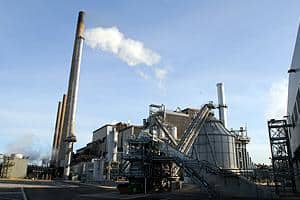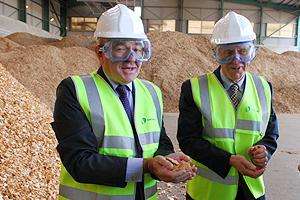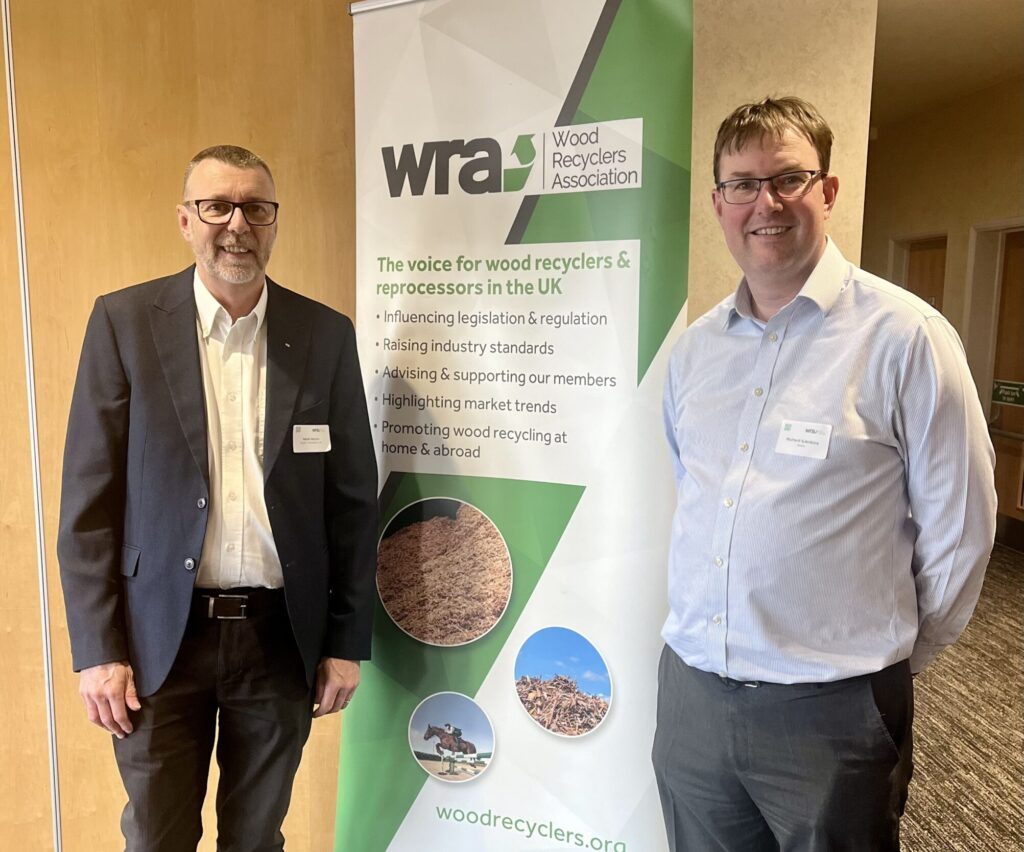Energy minister Malcolm Wicks unveiled the £60 million Wilton 10 biomass plant on the Wilton International manufacturing site, hailing the facility as a “forerunner” of how the UK should produce energy in the future.
The fuels are mixed together to create hot gases, which are then passed over water to produce steam which turns a turbine to create 30MW of electricity a year for power giant EON.
Opening the facility, Mr Wicks paid tribute to the carbon-neutral energy the plant would create – as the carbon emissions released by the plant would be balanced out by the carbon taken out of the atmosphere by the trees growing.
He said: “Biomass is a critical form of renewable energy and in the UK we want 20% of our electricity to come from renewable sources by 2020.”
“This is a win-win situation in all sorts of ways and this is very much a forerunner…. we hope to see many more in the future.”
Paul Gavens, executive vice president and managing director of Sembcorp Utilities UK said: “Sembcorp is proud to be at the forefront of this type of biomass power generation and we are committed to creating a greener future for our business.”
Recycling
To feed the Wilton 10 plant with recycled fuel, Sembcorp has a partnership with local firm UK Wood Recycling. The firm accepts all grades of non-hazardous wood such as kitchen units, pallets and doors from which it uses lower grade material to produce fuel.
This is cleaned and blended at UK Wood Recycling's bespoke facility on the Wilton International site which opened earlier this year (see letsrecycle.com story), before being sent to Wilton 10.
The company has already stockpiled 30,000 tonnes of material in anticipation of Wilton 10 opening and has received a lot of enquiries from firms eager to dispose of lower quality wood which currently had no other outlet than landfill.
Mr Hadfield added that sending waste wood to biomass would become increasingly important once the landfill tax escalator shot up by £8 a tonne in April 2008. “It is forward thinking,” he said.
Barriers
Despite excitement over the new Wilton 10 plant, however, some concern was voiced about current barriers to building biomass plants elsewhere to help tackle the millions 7-8 million tonnes of waste wood sent to landfill in the UK each year.
Toby Beadle, of consultancy Urban Harvest UK, said that the perception of recovered wood as a waste created problems and needed agreement, following the failure of efforts by the Environment Agency to re-define the point at which it wood ceased to be a waste (see letsrecycle.com story).
He said: “We need a government funded project to develop standards and categories for wood to be adopted universally including by the EA and SEPA.”
Nick Booth, vice president of Sembcorp Utilities UK, agreed that work was needed to stop recycled wood being classed as a waste as at present all plants which burned it had to be compliant with the Waste Incineration Directive (WID) which sets strict emissions controls.
He explained that the regulations provided a perverse incentive for generating electricity from waste material – no matter how clean the material was.
“Legislation sets targets even higher than coal fired power stations which actually make it tougher to use recycled wood instead of sending it to landfill,” he explained.
CHP
Mr Booth added that Sembcorp had not been able to make the Wilton 10 facility a combined heat and power (CHP) plant -which is more energy efficient – because there was currently no financial incentive under the Renewables Obligation for producing renewable heat alongside electricity.
He said: “This plant is power only which is a bit of a travesty because the steam could be used on site.”
However, Sembcorp Utilities UK's vice president said that the government had published a set of proposals to give CHP an even bigger incentive – which would encourage the firm to build more biomass CHP plants around the UK.
He said: “In future we would like to open a CHP… we will look to build similar plants elsewhere in the country and use Wilton 10 as guidance.”








Subscribe for free